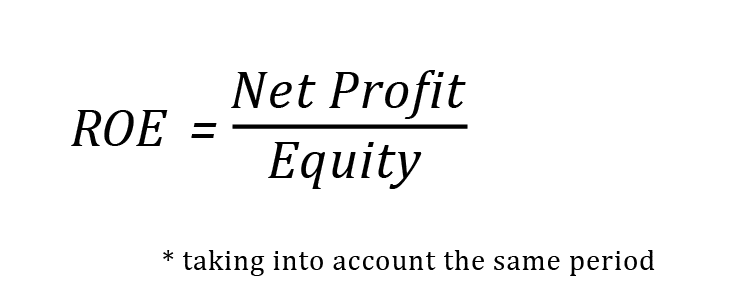ROE | Return on Equity
Return on equity” (ROE) is a measure of financial performance calculated by dividing net income by equity. ROE is considered a measure of a company’s profitability relative to its equity.
- Definition: What is ROE - Return on Equity?
- How do you calculate ROE - Return on Equity? And what are the benefits of ROE calculation?
- What to do in case of negative Return On Equity?
- What is the difference between ROE and ROI?
- Conclusion: ROE is an important metric, but it must be evaluated in combination with other metrics
Definition: What is ROE – Return on Equity?
ROE measures a company’s ability to create value for itself with its own resources. The return on equity shows how much profit it can generate with stakeholder’s money and demonstrates the stability and financial potential of the company. Because one thing is certain: with a high ROE, hardly any company will develop negatively over many years.
How do you calculate ROE – Return on Equity? And what are the benefits of ROE calculation?
ROE is an interesting parameter that shows the efficiency of management and allows a comparative analysis between companies. When we analyze companies from a sector, ROE can be a competitive differentiator. This is because the higher the ability of a company to be profitable and pass on dividends to its shareholders, the higher the return on equity.
The result is a measure of quality and profitability. This is because the company in question distributes the capital to its shareholders or reinvests it in its own corporate growth.
In fact, there is no optimal figure for the ideal return on equity, however, among investors, a return on equity of 20% is considered healthy. It is worth noting that the level of ROE is a static ratio, as it provides historical data derived from accounting information disclosed by the company itself. This analysis is fundamental for a decision on what to invest in – but it is not enough.
That’s because this indicator can obscure important information about a company because it does not transparently show a company’s gearing. Therefore, to understand the true value of a company, it is important to analyze several different metrics, as they complement or depend on each other.
The formula for the calculation of ROE
- Net profit: Net profit is the actual income of a company, determined when we deduct all costs from gross income, taking into account, for example, administrative expenses, depreciation, amortization and taxes.
- Net equity: it is the share capital with which the company is established and/or new amounts, in addition to the accumulated profit, which can be positive or negative.
What to do in case of negative Return On Equity?
A company that has a negative return on equity may be unprofitable, i.e. it may be generating losses for its shareholders. In most cases, a negative ROE indicates a negative net profit. For a company to move from a negative ROE to a positive ROE, it must improve its profitability if the problem is in net income. If a company has negative net assets, it is very likely that net interest has been negative for some time and has caused an accumulated loss in recent years.
Improving a company’s return on equity means improving its profitability relative to net income, so that more return is earned on shareholders’ capital. To make it clearer: When analyzing the formula, it becomes clear that the return on equity does not increase when a company strongly increases its equity but does not increase its profit.
Therefore, in order to achieve the opposite, it is necessary for profit to be greater than equity, which proves that the company is able to perform positively in the long run.
What is the difference between ROE and ROI?
While ROE is used to calculate a company’s ability to be profitable based on its profits and net assets, return on investment (ROI) is a ratio that indicates the return on capital. It is important to understand the difference between these variables because a profitable company (positive ROE) is not always the most profitable (positive ROI) and vice versa.
So, ROI is a way to analyze different sectors from the same point of view: to understand if it is feasible to continue an investment process expecting a profitability higher than the value added in a given period.
Conclusion: ROE is an important metric, but it must be evaluated in combination with other metrics
Return on equity, or ROE, is thus a meaningful percentage rate that measures how efficient a company is in its ability to generate profits.
Among the most diversified KPIs of companies, ROE can be highlighted as one of the most important. However, it must be emphasized again and again that an investment analysis should never consider only one indicator, other indicators such as ROI, ROA or ROCE should also be considered. Therefore, a cyclical review of the situation is necessary every time.


